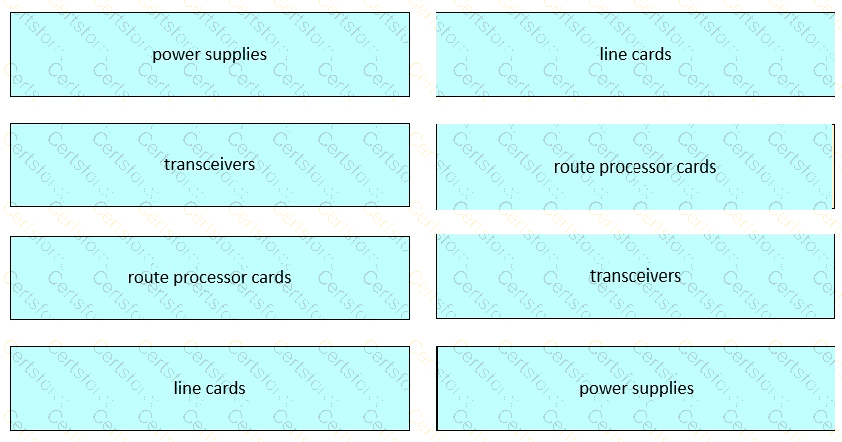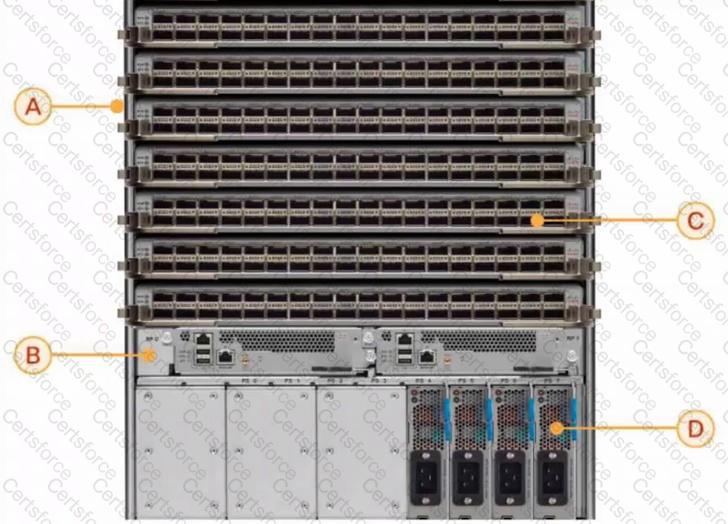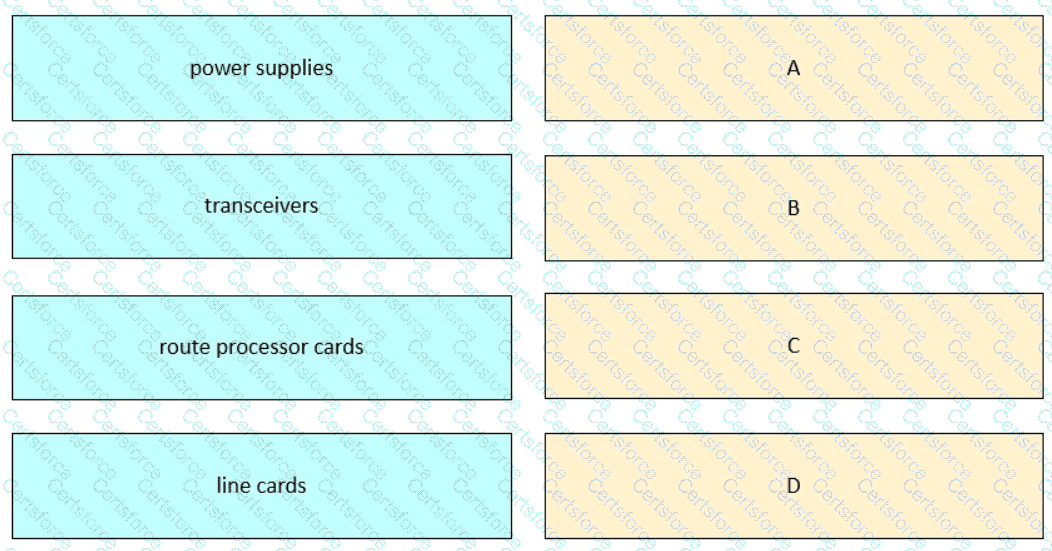
A → Line cards
Provide the physicalinterfaces for network connectivity.
B → Route processor cards
Manage routing functions and system control.
C → Transceivers
Installed in the ports of line cards for optical/electrical signal transmission.
D → Power supplies
Provide power to themodular system and are hot-swappable.
Cisco'sNCS 5500 Seriesis designed for service provider and data center deployments. The FLDTEC course outlines the layout of FRUs in modular platforms like this one:
A – Line Cards: Located in the upper slots, these modules handle the bulk of switching and forwarding functions.
B – Route Processor Cards (RP Cards): Positioned centrally, these provide management and control plane services for the router.
C – Transceivers: Installed into the line cards, transceivers provide physical connectivity through optical or copper interfaces.
D – Power Supplies: Located in the bottom rear section, these modules provide redundant and hot-swappable power to the chassis.
Recognizing each FRU visually and functionally is critical when performingRMA procedures,component diagnostics, orhardware upgradesin the field.


Submit